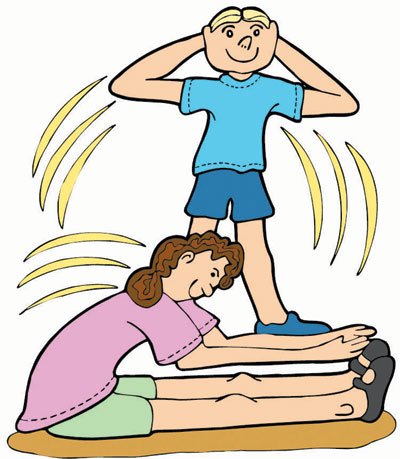My last column addressed the severity of the childhood obesity
epidemic.
The good news is that its doesn’t have to be that way. It is
never too early to get started on a fitness program. Getting
children in the habit of a healthy lifestyle begins at birth.
From nutrition to exercise, the younger a child learns positive
behaviors, the better.
My last column addressed the severity of the childhood obesity epidemic.
The good news is that its doesn’t have to be that way. It is never too early to get started on a fitness program. Getting children in the habit of a healthy lifestyle begins at birth.
From nutrition to exercise, the younger a child learns positive behaviors, the better.
Let’s take a look at exercise programs geared to youngsters:
For starters, play programs for children ranging from infant to toddler. They address the multiple stages of the motor learning process using different apparatus for different skills.
The also incorporate tactile and auditory activities which is important for kinesthetic (movement) awareness. Organizations like “Gymboree,” “My Gym,” or “Little Gym” are great places to begin.
Past the toddler stage, there are many, many sport programs for young children that also foster physical development.
From youth gymnastics and/or dance to martial arts to soccer to T-ball/baseball to any other sport you can imagine, there are programs for all ages.
Beginning at noncompetitive levels, the organizations teach children motor learning skills that are more advanced than those taught in programs geared toward the infant/toddler levels.
They also serve to introduce children to the enjoyment of being physically active.
It is important to give kids a sense of self-worth and encourage them to do the best that they can do, without the pressure of having to be better than the other children.
Leading by example is a powerful tool for parents as well. Parents who partake in and enjoy physical activities are more likely to encourage their kids to follow suit, and the kids are more likely to do so. I’m a perfect example.
I credit my parents for my love of exercise. They were (and still are) avid exercisers, and urged me to do the same.
It didn’t matter to them what type of physical activity I did, as long as I was moving around.
They agreed that if I was doing something I enjoyed, that I would continue. And they were right!
One of the most important benefits of youth exercise is a positive attitude toward a lifelong activity.
Other benefits include: improvements in muscular fitness, bone density, body composition, motor skills, and injury prevention.
So, how do you get your children to exercise if they are not doing so?
The most effective way to get them involved is to focus on the social aspects of the activities, since they usually don’t have the ability to comprehend the abstract concepts like strong bones and disease prevention until they are a bit older.
And more and more research is proving that youths can safely do more fitness activities than was previously thought.
Exercises that use the body in isometric contractions and increase flexibility such as T-Tapp, yoga, or pilates are ideal.
Team sports are a great option as well. Not only do they foster healthy physical habits, they teach the skills of teamwork.
However, we must still remember that children are not just young adults. Their programs must be tailored to their developmental stages.
It is never too early to start being aware of personal fitness. Start ’em young, and encourage lifelong fitness habits.













